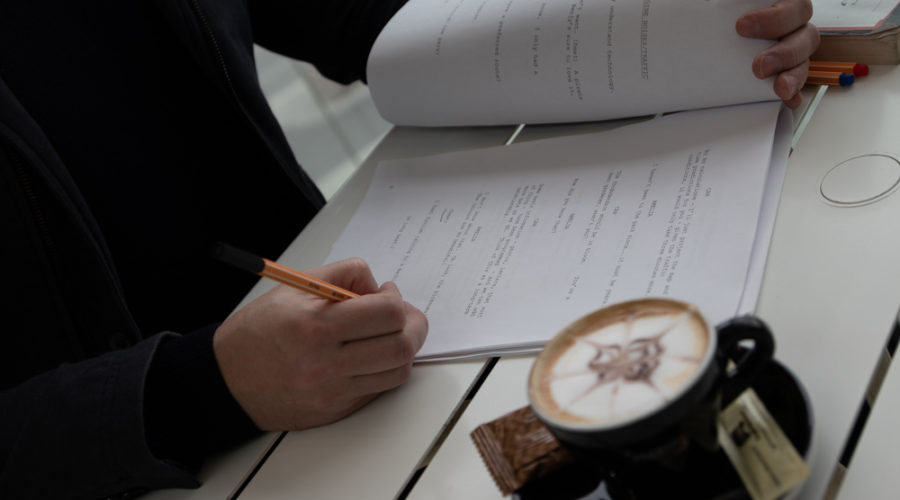Eventually you’ll finish your first draft. Now you must sit and read your work.
Maybe you’ll think “this is fantastic, it does exactly what I want!” Great! Correct spelling/grammar mistakes and move on. Your readers can disillusion you later.
Sometimes the manuscript will feel okay but not great. This is a very difficult situation, because how do you pin down ambivalence? The answer is skill and experience. We’ll be looking at techniques to identify why your story doesn’t feel right in this article.
Finally, you may find yourself experiencing a strong negative reaction to your work. Don’t press the panic button. This reaction shows your writing skills have advanced enough to identify problems. Having a strongly negative reaction is not the time to quit. It is when you can really begin. Let’s talk about how.
We have identified three key qualities of a good story.
First, the protagonist(s) must have something the badly want or need, that conflicts with an emotional/psychological form that preferably comes from their past.
Second, there is a significant obstacle preventing them from getting what they want – an obstacle that it becomes clear cannot be overcome unless the protagonist changes.
Third, all this emotional turmoil and transformation is not shown by declaring how the characters feel but by showing the actions of someone amid those experiences. Make the characters act like people who feel and let those actions transmit the feeling to the reader.
If a part of your text isn’t working, one or more of these three factors are almost certainly the cause. There can be larger and more profound plot problems, but we’ll get to later lessons. If I’m really brave, we’ll look at how stylistic and rhetoric problems can crush your work. But, for the moment, lets focus on these three: desire with flaw/escalating obstacles/show emotions don’t state them.
For each chapter – even each scene – go through first and identify what the characters want. Circle what part of the text illustrates this. When we were writing ugly, we could keep that simple (“I want to join Starfleet!”), but now we’re becoming more sophisticated writers we can look at ways to illustrate rather than declare desire (Evelyn stared at the Starfleet recruitment poster until the train had passed it by, gripping her duffle bag a little closer.) However, first, make sure the want is clear in the scene.
Second, is there some clear obstacle in the scene. Circle where is it mentioned. Will the reader be able to tell how the obstacle prevents the desire? And are the obstacles steadily growing? Technically, there is a pattern to this – obstacles grow to the midpoint, descend for a short time after the mid-point climax, then climax somewhere around the penultimate chapter. But those are macro-scale problems – for the moment we are working scene by scene. Just make sure you can circle the obstacle, and that it is sufficient to interfere. (The train juddered, and she almost dropped her wallet. 500 dollars was all she had left. Would that be enough to bribe her way off planet?)
If either of these things are missing, then you need to, first, ask if this scene is necessary. Not if it’s pretty or beautifully written. Is it necessary? If it does nothing to move forward the story (want/flaw vs obstacles) then it doesn’t belong.
If it does belong but you can’t circle the important parts, you need to work to bring out the want/flaw and the obstacle. We’ve talked about this elsewhere, but the most important thing is that the reader can broadly sum up what is happening in a couple of sentences.
Finally, check that there isn’t an easier solution they could take, and how you can eliminate that possibility. So many romance and romantic comedies are ruined because characters just don’t talk to each other, which quickly becomes tiresome. Whole seasons of Doctor Who are undermined because the Doctor’s mysterious Sonic Screwdriver can solve every problem. If there is an easier way to avoid the obstacle, you need to have a bloody good reason for why they haven’t taken it.
Go through your story and ask “why?” of every single line. WHY does a character do what they do, say what they say, feel what they feel? You must know the answer. Once we understand why, we can say how is it affecting them, what is it about this situation that creates that response.
Overwriting is fine. Writing until you understand is good. Then cut it back to the image, the showing, the action. If the action is in accordance with the underlying reasons why, the reader will figure it out themselves – and enjoy the text so much more for the experience.
Now you’ve ensured there are clearly identifiably wants and obstacles, move on to style. Work through your text and find ever occasion when you use the word for an emotion. If it is within dialogue, you can just about get away with it – but think long and hard if there’s a better way (“Did you know she shouted at the recruitment officer?”).
Outside of dialogue any emotion word should be replaced with an action or with description that conveys that emotion. This will immediately make your text more engaging.
Have a re-read. It’s better, isn’t it?
Exercise
Time for some bravery. Go back to one of your answers in the earlier lessons, preferable lessons 1-4, and edit it for want, obstacle, and showing rather than telling emotion. You have 200-400 words, and it’s okay if you need to focus on a smaller part of the story to achieve the exercise. Time to see if you’ve improved! Good luck!
If you enjoyed this article, please consider clicking this link and buying one of my books.



